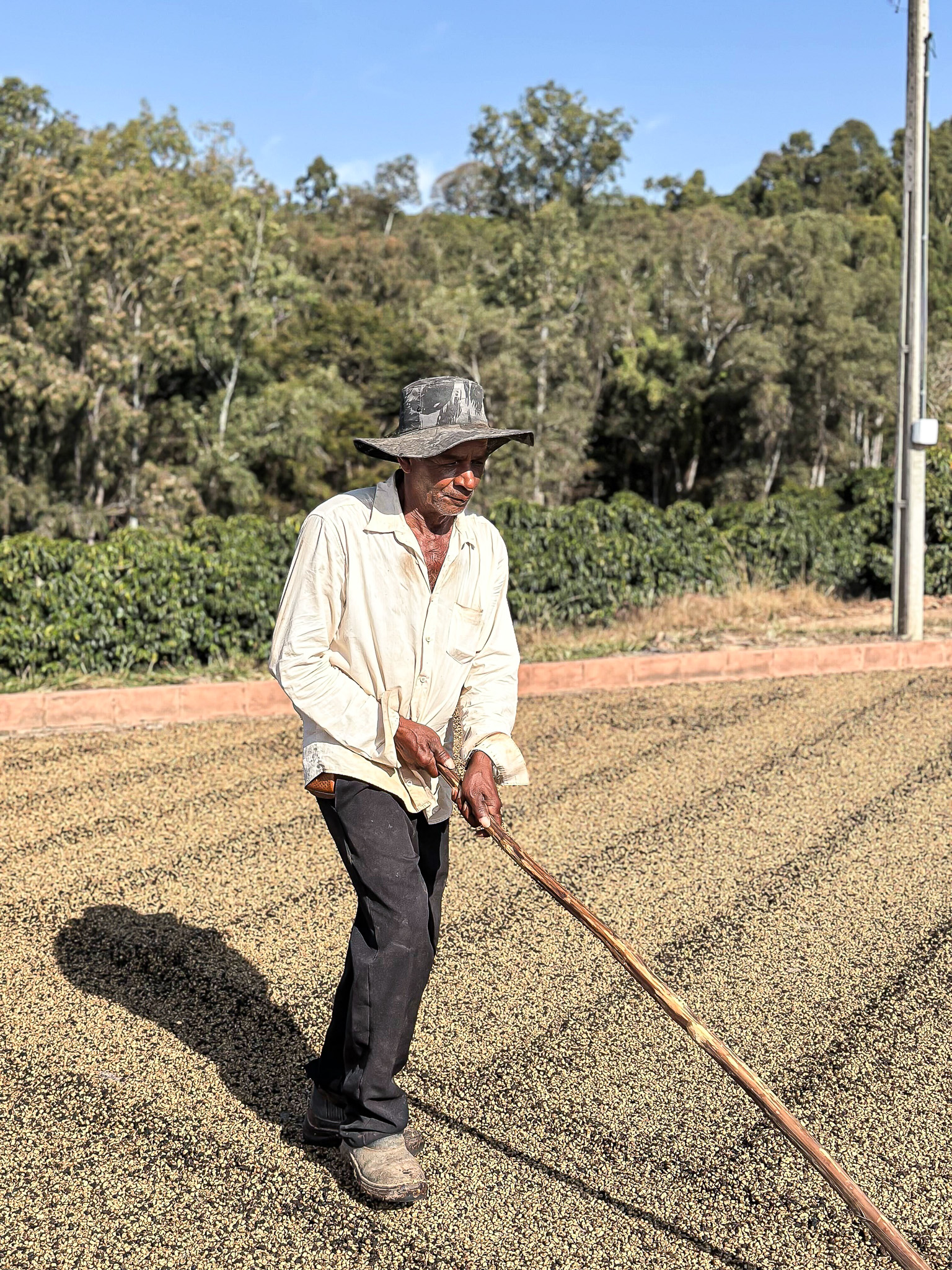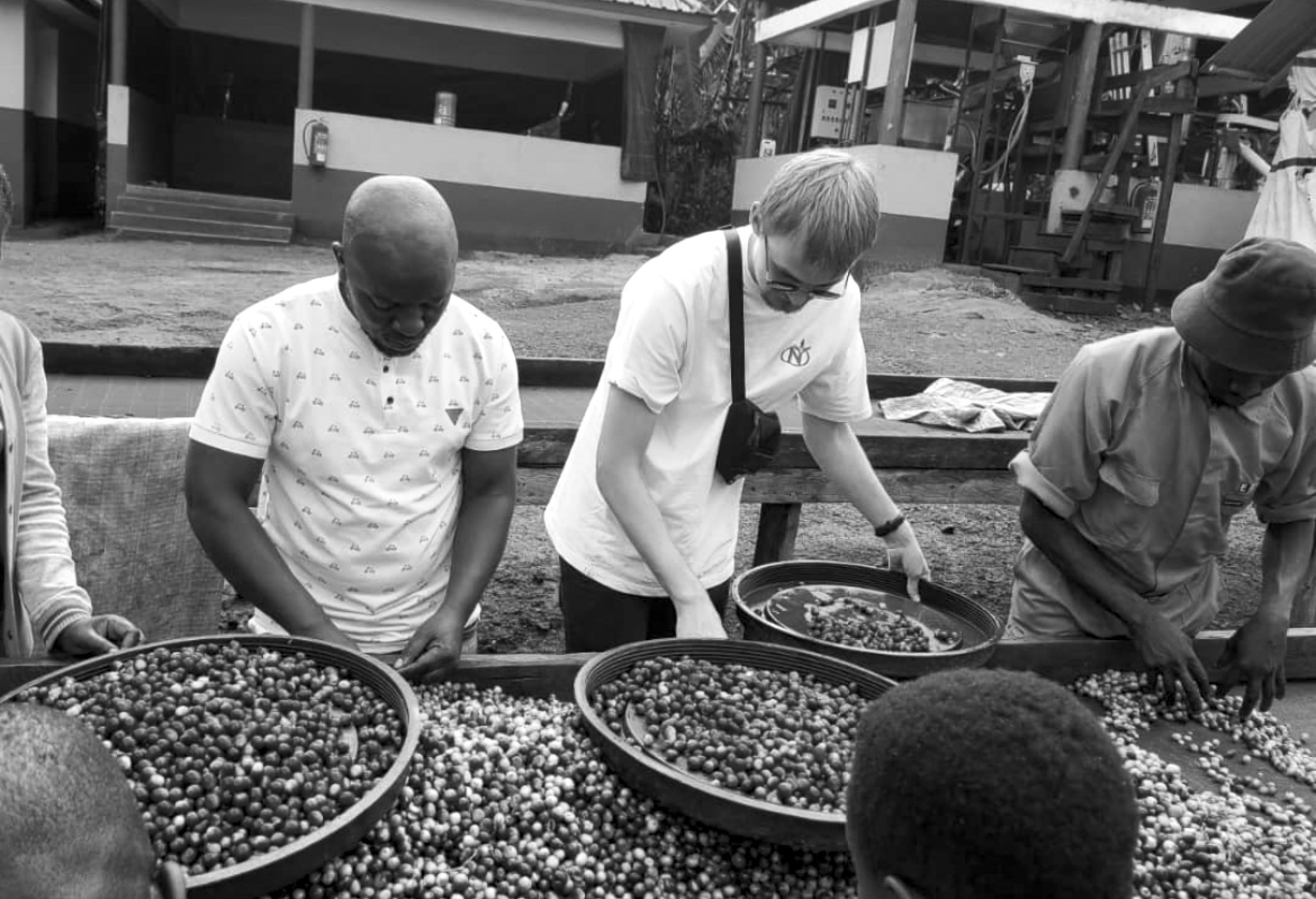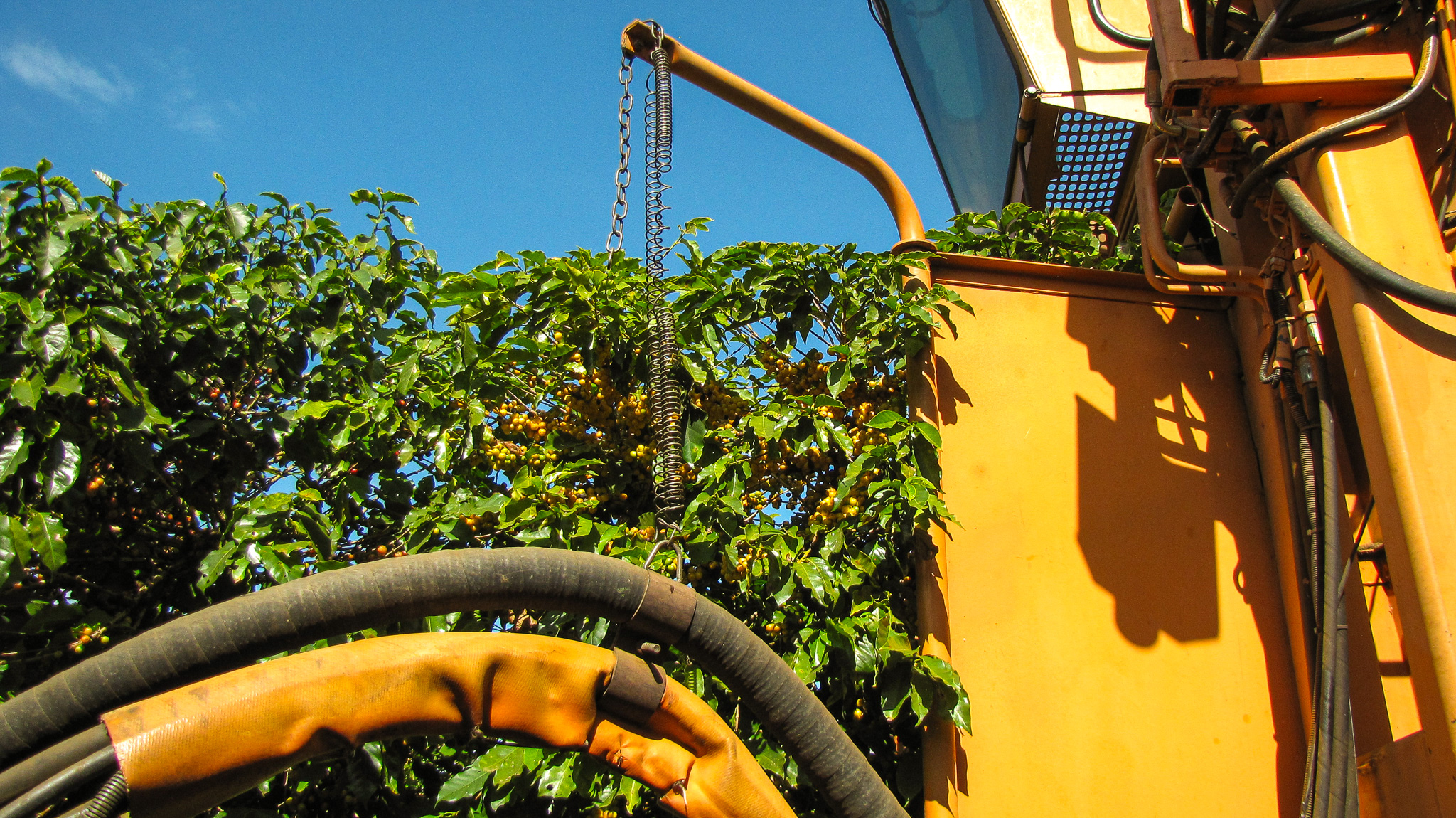The Brazilian coffee harvest is moving steadily towards completion. While our first Nordic Approach shipments left Brazil in July, our specialty coffee microlots are set to follow from late August. The main export season runs through the end of the year, but with expected port congestion, we recommend shipping as early as possible to avoid delays.
This August, our green coffee buyer, Josh, travelled to Brazil to visit a mix of familiar and new specialty coffee producers and gather insights into the newest harvest. Highlights included visits to Sítio Beija Flor and Sítio Toca da Jaguara with our producer and friend Natália Brito, a stop at Capadócia with long-term partner Augusto Borges, and time with contributors to the Luzia Collective, Das Almas in Cabo Verde, and smallholder communities in Nova Resende and Muzambinho. Josh observed regional variations, price fluctuations, climatic conditions, and overall coffee quality across regions.
Plan your Coffees from Brazil now!
If you’re buying FOB coffee from Brazil, now is the perfect time to start planning. We recommend placing orders by the end of October to avoid delays, though the buying window may last until February. For SPOT buyers, a range of Brazilian specialty coffee lots is available now—check our offer list or contact our team for specific requests.
2025 is looking to be a strong year for Brazilian coffee and it’s a good moment to strengthen relationships with trusted producers while exploring new projects such as Sítio Beija Flor and Sítio Toca da Jaguara. Peaberries, in particular, are looking excellent and well worth considering.
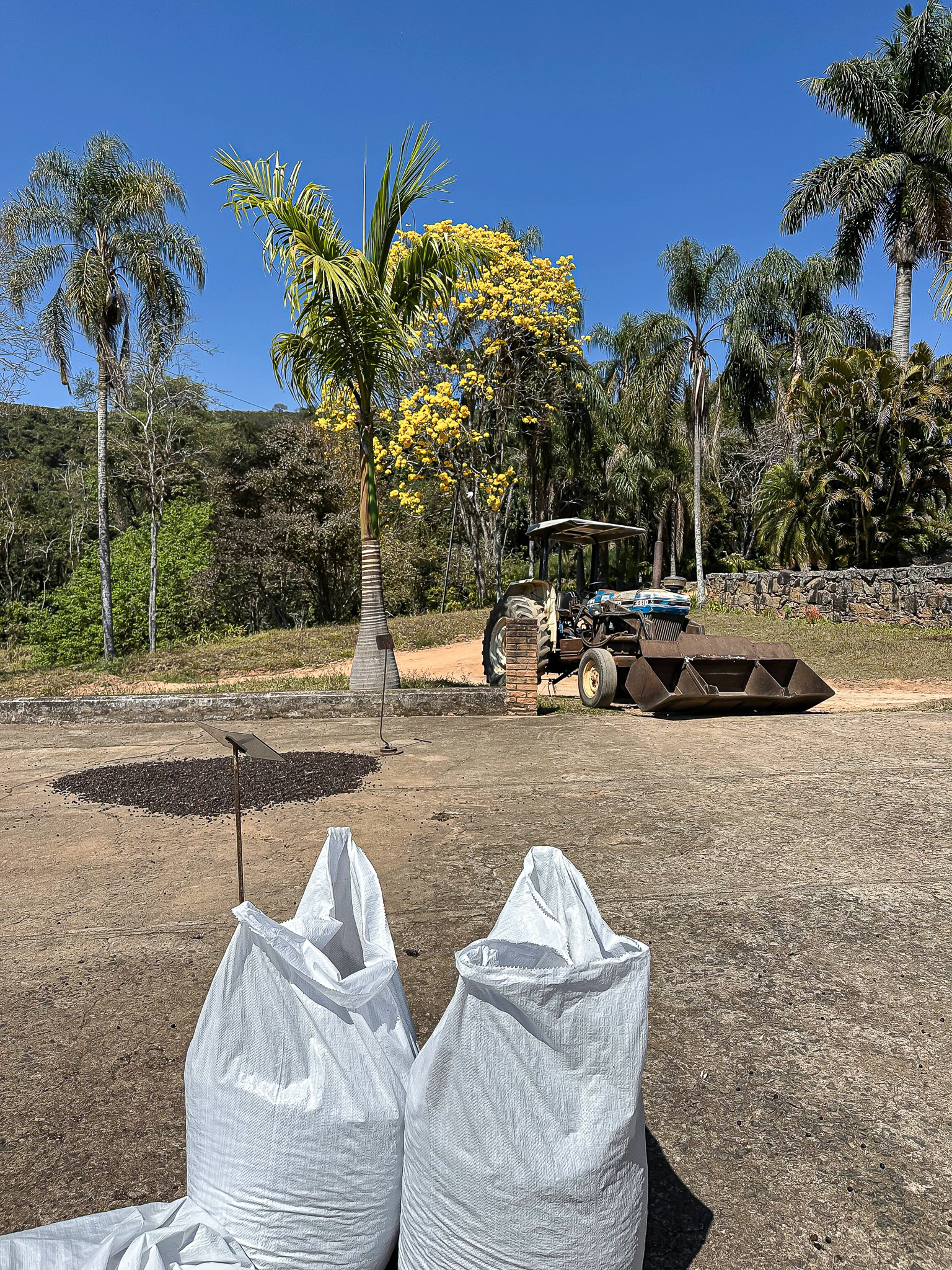
Variety Trends
When visiting producers' sites, we observed that while Catuaí and Mundo Novo still dominate, Arara is rising in popularity for its yield, resilience, and fruit-forward red fruit profiles. Some farmers are experimenting with Paraíso to maintain diversity.
Last year, we saw more specialty lots of Icatu across several regions with light fermentation notes. Early harvest conditions favoured fast-maturing varieties like Yellow Catucaí, but as the season progresses, we expect more variety-driven clarity and nuance.
Acauã is performing well with interesting fermentation profiles, while Guara emerges as a solid alternative to Catucaí.
Quality Practice and Highlights
Overall, quality this year is strong, with more even maturation across the regions where we work and great potential for microlots. All regions we work in reported cherry volume converting to less green and lower density to some extent. This season our producers are showing less interest in anaerobic fermentations, given the higher risks and lower yields, but instead are focusing on naturals and farm investment. We could also observe that microlot deliveries are slightly slower than in previous years, but new direct negotiations with farmers keep us well connected and ensure our procurement team access to the right coffees.
One of the most exciting developments this year is the high percentage of peaberries, many of excellent quality and some are already appearing on our offer list with more to come. On the grading side, we’ve also introduced an AI green grader to strengthen a more robust physical grading and reduce the risk of quakers.
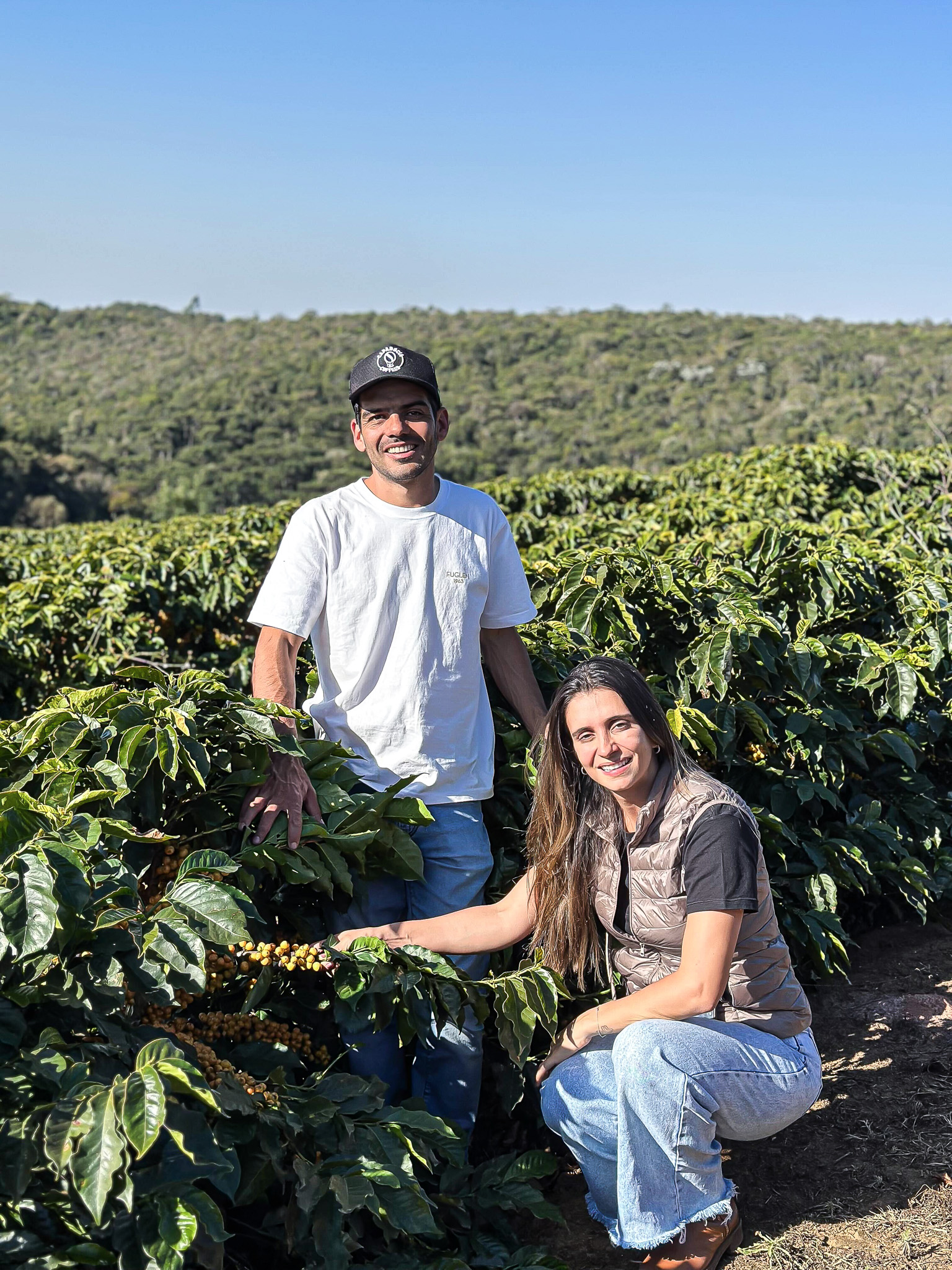
Regional Updates
We see Safras & Mercado reporting 91% completion of arabica harvest, as of 6th August; whereas Cooxupé reporting 80.4% at a similar time and our internal data showed a pace slightly behind this with progress varying widely across regions, due to both climate and topography.
In Sul de Minas, progress is similar to the national average. This has been allowed by mixed harvest practice and some areas of lower-elevation farms. While higher-altitude lots and peak maturation lots are only now entering storage with strong cup potential. Microlots are beginning to arrive, including fermentation lots, with scores in the 86–89 range. Producer price expectations vary considerably, as do yields. Many are reporting very good yields, albeit with lower density beans on average. Many farmers holding coffee instead of selling, as well as low levels of participation in forwards, this has exacerbated short rallies. In some cases, we’re making counter offers post-assessment to ensure fair value for both sides.
In Mantiqueira de Minas, the first deliveries in the region show a lot of under-ripe beans harvested. This is likely because labour was scheduled too early, to ensure producers secured some of the higher price expectation. We typically target July to August harvest, as higher altitudes and manual harvest practice mean later consolidation of volume. Prices remain sticky at around 2500 BRL per bag regardless of farm size or quality. Many farms are still recovering from heavy pruning done last year to manage water stress, and motivation for experimental fermentations remains low unless pre-processing agreements offer prices above 3500 BRL. Some have reported lower yield due to skeletonisation or pruning.
Meanwhile, Matas de Minas is already ahead of the national average harvest. While the region has seen more insect damage than others, favorable drying conditions have balanced things out, and the outlook is promising. Our team will be there in late August to make final selections. This area likely requires more exploration, and has been slower to adopt specialty practices more widely, but shows great potential.
Price expectations moving forward
Market conditions in Brazil remain challenging, with high volatility making negotiations difficult. Internal prices in Brazil are still elevated, especially for sorted and fermentation lots and currency movements are adding more pressure to it. The dollar’s depreciation has strengthened the Brazilian real, which raises export parity prices and pushes price thresholds higher for exporters.
Exporters and larger players are also cautious about the risks of margin calls, and many are holding quite low stocks. Financing is another challenge, since it’s dollar-denominated for exporters, combined with high domestic interest rates, the cost of doing business remains high.
On the climate side, recent weather has brought uncertainty. Sul de Minas experienced two short hail events, and frosts were reported in Cerrado. While the long-term impact is still being assessed, some reduction in 26/27 harvest expectations is already anticipated. This, in turn, reinforces producers’ firm price expectations.
This season, early planning will be essential, not only to avoid the risk of delays from port congestion, but also to secure your favorite lots while they’re still available. With strong quality across regions, exciting variety trends, and plenty of promising microlots on the list, now is the right moment to position yourself for an excellent year of Brazilian coffee.
If your looking at buying coffees direct from Brazil FOB, pre-book your coffees or order samples connect with our Brazil Green Coffee Buyer, Josh Coleman at josh@nordicapproach.no who happily helps you with this!
And if you’re interested in joining one of our upcoming origin trips—like the next one to Brazil—we recommend checking our Events page regularly or subscribing to our newsletter for updates.


